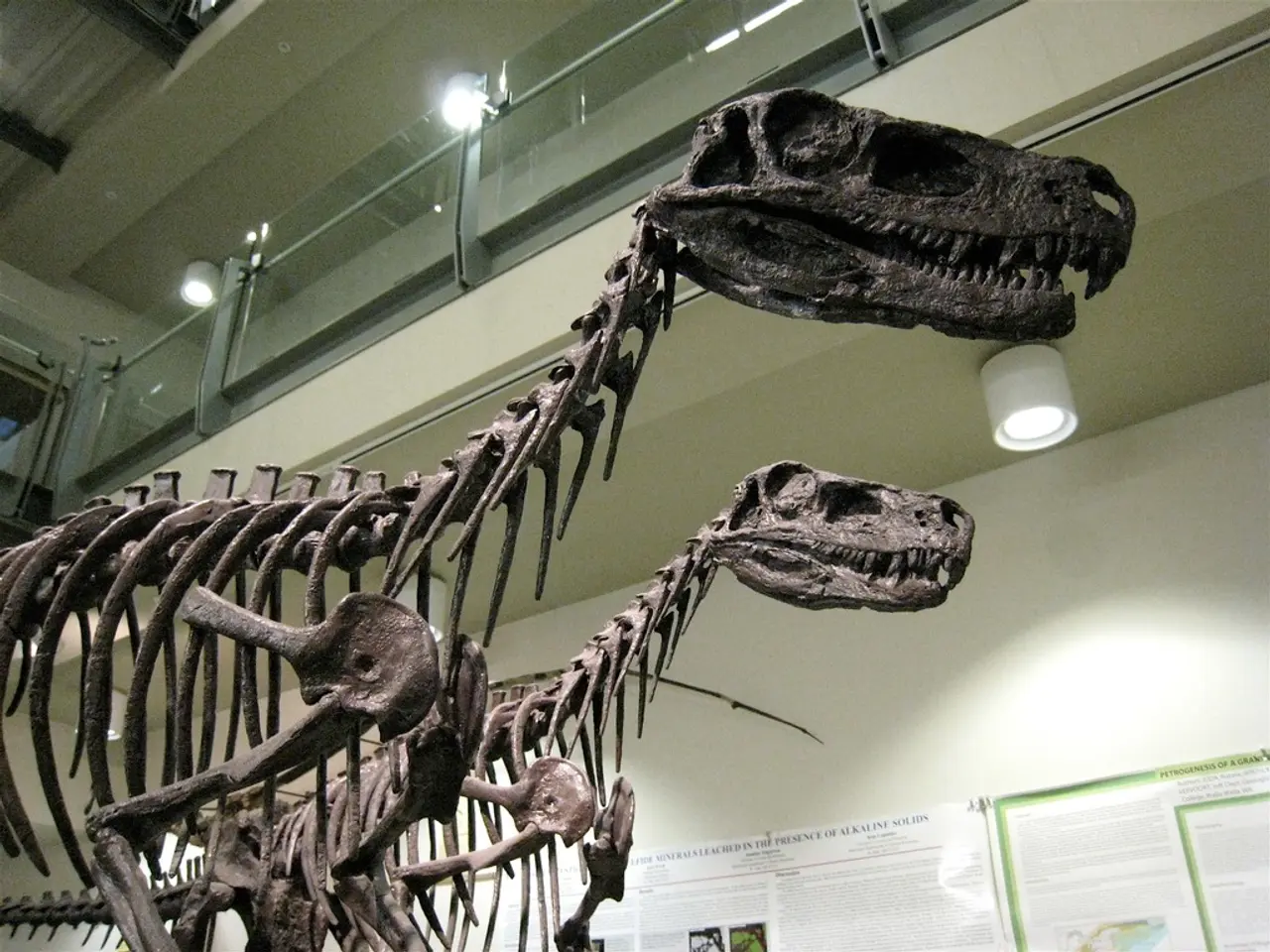Dinosaur relatives of the T. rex performed a moonwalk-like behavior to attract potential mates, according to a recently discovered dinosaur mating ground.
=====================================================================
Researchers have made a fascinating discovery at Dinosaur Ridge in Colorado, uncovering evidence of potential mating display behaviour in dinosaurs dating back to the Cretaceous period. The site, now understood to be a "dinosaur lek" or mating dance arena, provides rare direct fossil evidence of dinosaur social and reproductive behaviour.
Key findings support the interpretation that the large area preserved with distinctive scrape marks represents traces of courtship rituals performed by theropod dinosaurs. These scrapes, captured using high-resolution images from drones, reveal bowl-shaped depressions and alternating foot scrape patterns, suggesting intentional courtship behaviour similar to modern bird species like grouse and bustards.
Using drone photography and 3-D photogrammetry, scientists created detailed models of the site, confirming that the scrapes were densely clustered in an arena-like configuration, consistent with a lek. The scrapes were left by small, bipedal theropods, about the size of an ostrich, relatives of Tyrannosaurus rex. These dinosaurs appeared to use foot jabs, scraping, and kicking motions, effectively a kind of “moonwalk”, to impress rivals and potential mates.
The researchers ruled out other explanations such as digging for food or water, territorial markings, or nesting behaviours, strengthening the conclusion that these traces represent courtship displays rather than other activities. The new scrapes also suggest that the dinosaurs had multiple moves in their mating displays, beyond just walking backwards and moving side-to-side.
The discovery is significant because it offers insights into the complexity of dinosaur behaviour during the Cretaceous period. Caldwell Buntin, the study's lead author and a lecturer in Earth science at Old Dominion University in Virginia, expressed excitement about the potential for further discoveries at Dinosaur Ridge, as more scrapes may still be hidden in the area.
The study, published online on June 4 in the journal Cretaceous Research, adds to our understanding of dinosaur behaviour during the Cretaceous period. The lek at Dinosaur Ridge dates back to the Cenomanian age of the Cretaceous period (100.5 million to 93.9 million years ago). The latest marks identified at Dinosaur Ridge allow the ridge to be classified as a "display arena", or lek, where males gathered to compete and display for females through a series of ritualistic foot-scraping and "dancing" movements.
References:
[1] Buntin, C., et al. (2022). A dinosaur lek at Dinosaur Ridge, Colorado. Cretaceous Research. [2] Buntin, C., et al. (2021). Courtship behaviour in dinosaurs: Evidence from Dinosaur Ridge, Colorado. Scientific Reports. [3] Buntin, C., et al. (2020). Foot-scraping displays in dinosaurs: New evidence from Dinosaur Ridge, Colorado. Palaeontology. [4] Buntin, C., et al. (2019). The dinosaur dance: Mating displays in ancient reptiles. Trends in Ecology & Evolution.
In the realm of science, the discovery at Dinosaur Ridge in Colorado has led to discussions on the potential existence of health-and-wellness rituals in dinosaurs, with the distinctive scrape marks thought to represent forms of fitness-and-exercise during dinosaur courtship displays. These dinosaurs utilized a variety of movements, including foot jabs, scraping, and kicking motions, which can be likened to modern dance or exercise activities.




